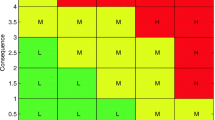Abstract
Linguistic term evaluations are always collected from two opposite sides at the same time in an assessment system. To process the linguistic knowledge, we propose an approximate reasoning approach with linguistic-valued intuitionistic fuzzy credibility based on linguistic-valued intuitionistic fuzzy lattice implication algebra and apply it to the assessment system. Firstly, we give a knowledge representation model with linguistic-valued intuitionistic fuzzy credibility. Based on the representation model, the forms and patterns of linguistic intuitionistic fuzzy modus ponens (LI-FMP) and linguistic intuitionistic fuzzy modus tollens (LI-FMT) are defined. Then there are three main phases of the knowledge reasoning with linguistic-valued intuitionistic fuzzy credibility. For a single rule, the similarity-based algorithms for LI-FMP and LI-FMT are given to get the sub-conclusion and the properties of similarity-based algorithms are discussed. For the multi-rule, we propose a rule aggregation operator to get the final conclusion by combining all the sub-conclusions. Some incomparable results are further processed if it is necessary. An intuitionistic linguistic-real valuation function is defined implying a linguistic intuitionistic fuzzy distance which is proved to be a positive valuation function. The ranking method of the incomparable results utilizes the linguistic intuitionistic distance. Lastly, the example about individual credit risk assessment shows how the proposed approach work and the contrast example illustrates that the proposed approach is rational and applied.





Similar content being viewed by others
Abbreviations
- LV-IFP:
-
Linguistic-valued intuitionistic fuzzy pair
- LV-IFC:
-
Linguistic-valued intuitionistic fuzzy credibility
- LV-IFL:
-
Linguistic-valued intuitionistic fuzzy lattice
- LI-FMP:
-
Linguistic intuitionistic fuzzy modus ponens
- LI-FMT:
-
Linguistic intuitionistic fuzzy modus tollens
- FMP:
-
Fuzzy modus ponens
- FMT:
-
Fuzzy modus tollens
References
Jochen K, Alexandra S, Gerhard A (2013) Consumer credit risk: individual probability estimates using machine learning. Expert Syst Appl 40(13):5125–5131
Ala’raj M, Abbod MF (2016) A new hybrid ensemble credit scoring model based on classifiers consensus system approach. Expert Syst Appl 64:36–55
Zadeh LA (1965) Fuzzy sets. Inf Control 8(3):338–353
Zadeh LA (1975) Introduction to theory of fuzzy sets. Int J Gen Syst 2(2):120–121
Zadeh LA (1996) Fuzzy logic equals computing with words. IEEE Trans Fuzzy Syst 4(2):103–111
Mokarram M, Khoei A, Hadidi K (2015) CMOS fuzzy logic controller supporting fractional polynomial membership functions. Fuzzy Sets Syst 263:112–126
Mardani A, Jusoh A, Zavadskas EK (2015) Fuzzy multiple criteria decision-making techniques and applications—two decades review from 1994 to 2014. Expert Syst Appl 42(8):4126–4148
Zhang ZM (2018) Trapezoidal interval type-2 fuzzy aggregation operators and their application to multiple attribute group decision making. Neural Comput Appl 29(4):1039–1054
Chamorro-Martinez J, Sanchez D, Soto-Hidalgo JM et al (2014) A discussion on fuzzy cardinality and quantification. Some applications in image processing. Fuzzy Sets Syst 257:85–101
Zhang HY, Yang SY (2017) Features selection and approximate reasoning of large-scale set-valued decision tables based on alpha-dominance-based quantitative rough sets. Inf Sci 378:328–347
Liu J, Ruan D, Carchon R (2002) Synthesis and evaluation analysis of the indicator information in nuclear safeguards applications by computing with words. Int J Appl Math Comput Sci 12(3):229–462
Xu Y (1993) Lattice implication algebra. J Southwest Jiaotong Univ 28:20–27
Xu Y, Ruan D, Qin KY, Liu J (2003) Lattice-valued logic: an alternative approach to treat fuzziness and incomparability. Springer, Heidelberg
Liu X, Wang Y, Li XN et al (2017) A linguistic-valued approximate reasoning approach for financial decision making. Int J Comput Intell Syst 10(1):312–319
Zhu H, Xu Y (2018) On derivations of linguistic truth-valued lattice implication algebras. Int J Mach Learn Cybern 9(4):611–620
Zou L, Zhang YX, Liu X (2015) Linguistic-valued approximate reasoning with lattice ordered linguistic-valued credibility. Int J Comput Intell Syst 8(1):53–61
Atanassov K (1983) “Intuitionistic fuzzy sets”. In: Sgurev V (ed) VII ITKR’s Session, Sofia, Jun. 1983
Atanassov K (1986) Intuitionistic fuzzy sets. Fuzzy Sets Syst 20:87–96
Zou L, Peng S, Pei Z, Xu Y (2012) On an algebra of linguistic truth-valued intuitionistic lattice-valued logic. J Intell Fuzzy Syst 24(3):447–457
Zadeh LA (1973) Outline of a new approach to the analysis of complex system sand decision processes. IEEE Trans Syst Man Cybern 3:28–44
Zhou BK, Xu GQ, Li SJ (2015) The quintuple implication principle of fuzzy reasoning. Inf Sci 297:202–215
Kaburlasos VG (2004) FINs: lattice theoretic tools for improving prediction of sugar production from populations of measurements. IEEE Trans Syst Man Cybern Part B Cybern 34(2):1017–1030
Chen SW, Liu J, Wang H et al (2014) A linguistic multi-criteria decision making approach based on logical reasoning. Inf Sci 258:266–276
Shi YY, Zou L, Xu YY et al (2017) Linguistic truth-valued multi-attribute decision making approach based on TOPSIS, IDEAL 2017. LNCS 10585:481–488
Zou L, Wen X, Wang YX (2016) Linguistic truth-valued intuitionistic fuzzy reasoning with applications in human factors engineering. Inf Sci 327:201–216
Funding
This work is partially supported by National Natural Science Foundation of China (no. 61772250 and 61672127).
Author information
Authors and Affiliations
Corresponding author
Additional information
Publisher's Note
Springer Nature remains neutral with regard to jurisdictional claims in published maps and institutional affiliations.
Rights and permissions
About this article
Cite this article
Zhang, Y., Huang, D., Lin, H. et al. Knowledge reasoning approach with linguistic-valued intuitionistic fuzzy credibility. Int. J. Mach. Learn. & Cyber. 11, 169–184 (2020). https://doi.org/10.1007/s13042-019-00965-y
Received:
Accepted:
Published:
Issue Date:
DOI: https://doi.org/10.1007/s13042-019-00965-y



